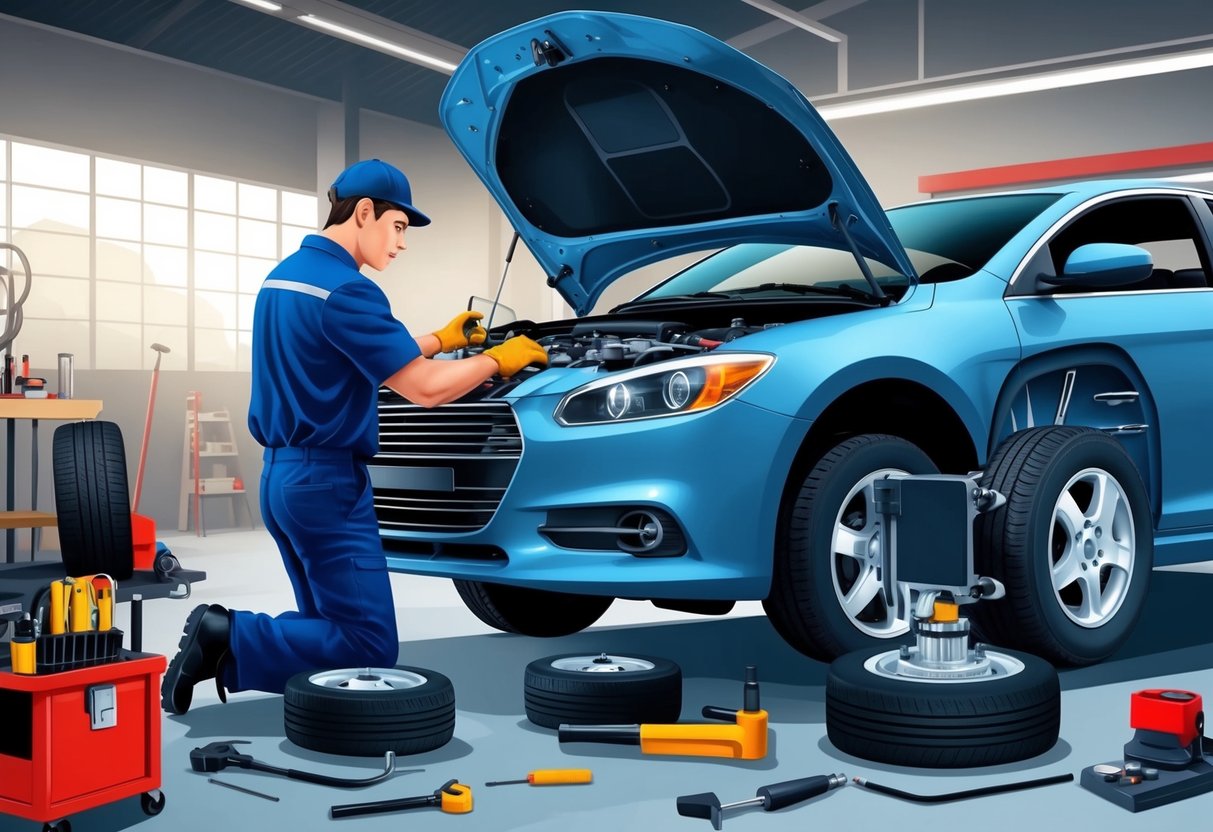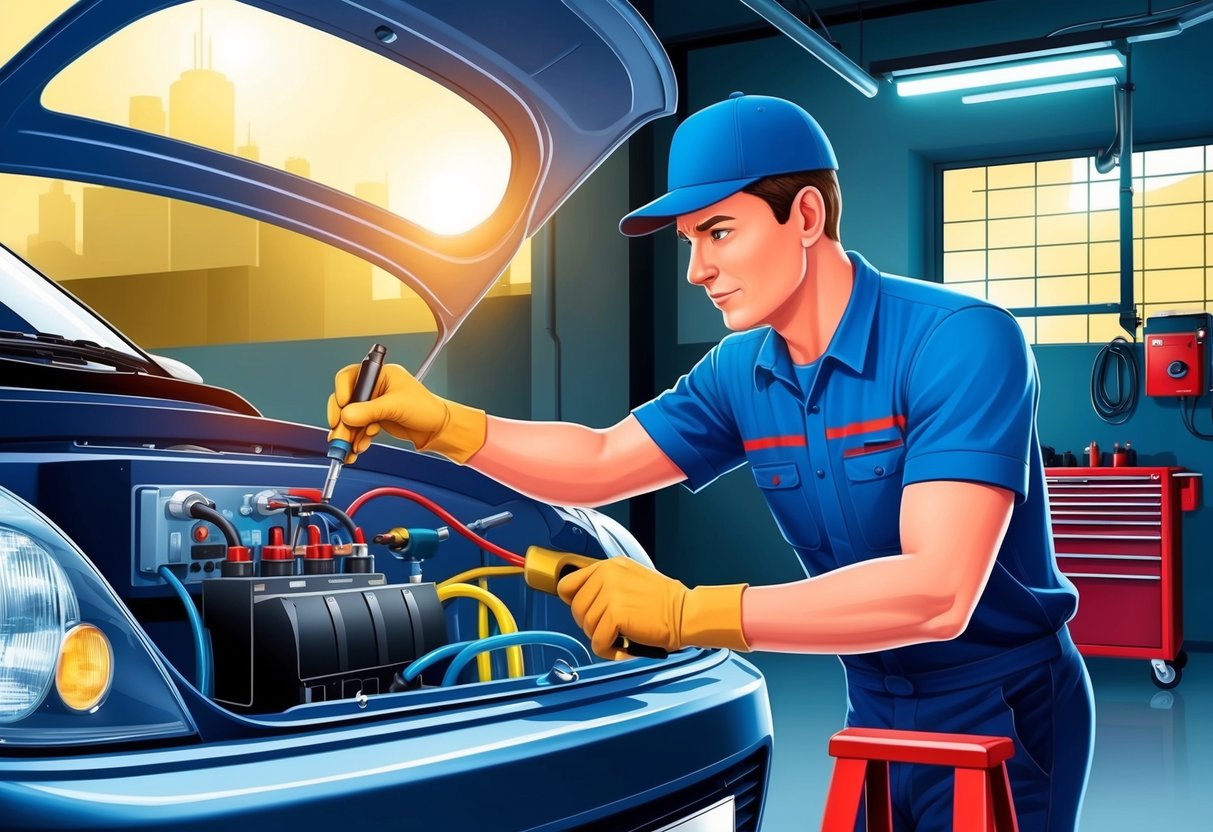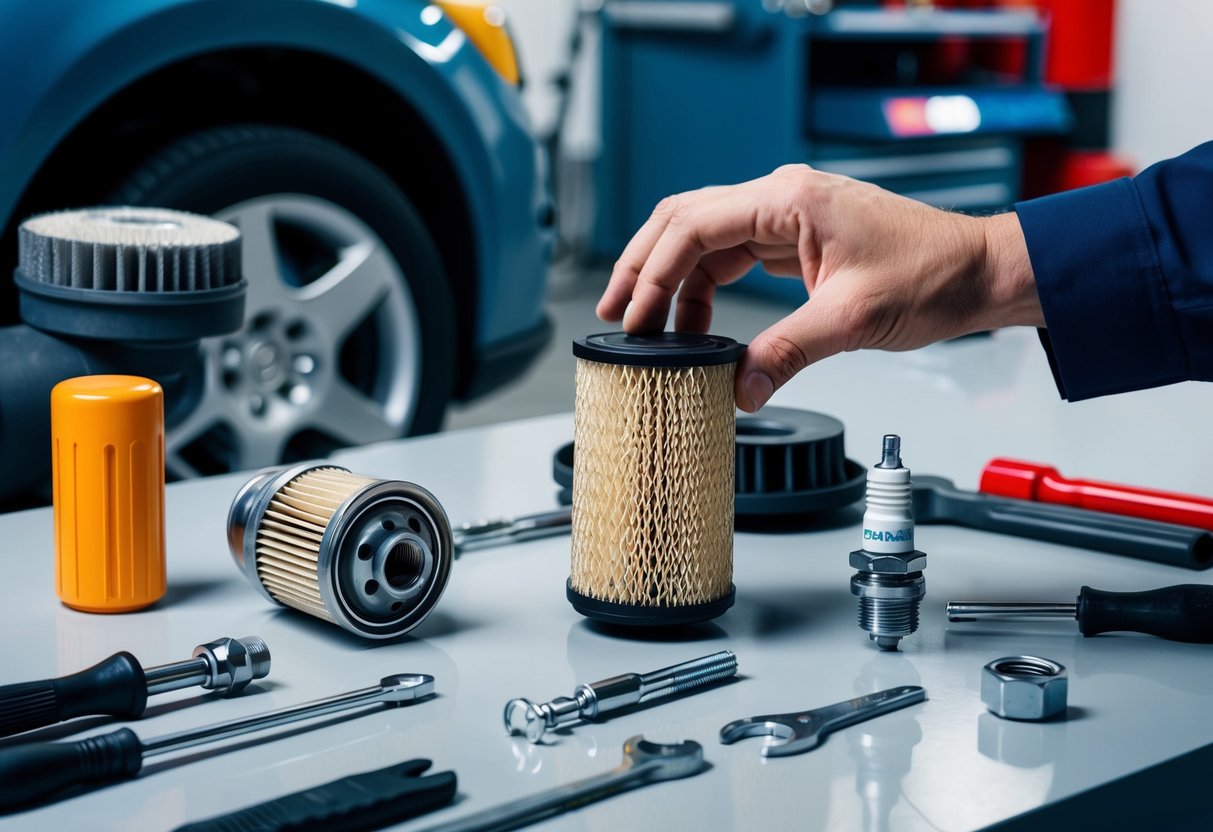
Electrical System and Lighting Maintenance

Proper care for a vehicle’s electrical system and lighting extends component life and enhances reliability. Regular attention helps prevent unexpected issues, ensuring all electronic features and exterior lights perform safely.
Checking Battery Health
A car’s battery is vital for starting the engine and powering electronic systems. It is important to inspect battery terminals for signs of corrosion or loose connections.
Corroded battery terminals should be cleaned using a baking soda solution and a brush. Rinse with water after cleaning.
Routine voltage checks help determine if the battery holds a proper charge. If the battery struggles to start the vehicle, consider having it tested at an auto parts store.
Most batteries have a lifespan of three to five years and may need replacement if there are frequent power issues. Secure mounting is also necessary—loose batteries can lead to vibrational damage or compromised circuit integrity.
Drivers should also avoid draining the battery by turning off lights and electronics when the engine is off. For further tips, see how keeping the battery clean and minimizing unnecessary electrical drain can make a difference at Best West Tire.
Inspecting Headlights and Signal Lights
Headlights, taillights, and signal lights are essential for visibility and road safety. It is important to check all vehicle lighting systems at least monthly.
Burned out bulbs should be replaced promptly. Lenses need regular cleaning to avoid reduced brightness from dirt or film.
Examine light housings for moisture or cracks, which can shorten bulb life and reduce lighting efficiency. In cases where headlights appear dim, polishing or replacing the covers can restore full brightness.
Verifying that headlight beams are properly aimed will also improve nighttime visibility without blinding other drivers. For detailed advice on maintaining all external lights, read this guide on proper car electrical system maintenance.
Routine testing of turn signals, brake lights, and side markers should be part of every vehicle inspection.
Filter and Spark Plug Replacements

Filters and spark plugs are vital components that impact fuel efficiency, emissions, and long-term engine health. Timely replacement minimizes rough idling, misfires, and reduced gas mileage.
Replacing Dirty Air Filters
Dirty air filters restrict airflow to the engine, forcing it to work harder. This can result in rough engine performance, sluggish acceleration, and higher emissions.
Checking the air filter at every oil change, and replacing it every 12,000 to 15,000 miles or as recommended by the vehicle manufacturer, helps keep the engine running efficiently. Signs that an air filter needs replacement include a visibly dirty or clogged filter, reduced acceleration, or a check engine light.
Installing a new air filter is a simple task for most vehicles and can be done using basic tools. Regular replacement ensures that only clean air reaches the engine.
A clean air filter supports smoother operation and lowers the risk of costly engine repairs over time. For more detailed advice, visit this car maintenance checklist.
Changing Worn Spark Plugs
Worn spark plugs are a frequent cause of engine misfires, rough idling, and difficulty starting the vehicle. Over time, spark plugs degrade due to heat, deposits, and general wear.
Most manufacturers recommend changing spark plugs about every 30,000 miles, though some vehicles may need them sooner or later depending on engine type and plug material. Common symptoms of faulty spark plugs include engine surging, poor fuel economy, and trouble starting.
Replacing spark plugs restores efficient combustion and improves power. Routine inspection ensures they are operating at peak performance.
For additional insights, review car maintenance tips to schedule timely maintenance and extend the life of the engine.
Windshield, Wiper, and Visibility Services
Clear vision is essential for safe driving, especially in adverse weather conditions. Proper care of windshield wipers and timely refilling of windshield washer solvent help maintain visibility.
Maintaining Windshield Wipers
Windshield wipers gradually wear down with exposure to sunlight, debris, and changing temperatures. Worn or streaky wiper blades can leave the windshield dirty, obstructing the driver’s view and increasing the risk of safety hazards.
It is recommended to inspect wiper blades regularly for cracks or loss of flexibility. Replacement intervals differ based on driving conditions, but most experts suggest wiper replacement every 6 to 12 months or immediately when performance falters.
Cleaning the blades with a bit of rubbing alcohol can extend their life and improve their efficiency, as highlighted by Sullivan Tire. When visibility worsens in rain or snow, timely action ensures safety and compliance with driving regulations.
Signs Wipers Need Replacement
- Streaking or missed spots on the windshield
- Squeaking or chattering sounds
- Noticeable splits or tears on the rubber
Refilling Windshield Washer Solvent
Windshield washer solvent is vital for removing dirt, bugs, and other debris during daily driving. A full washer reservoir ensures the driver can clear the windshield as needed, especially during long trips or in dusty conditions.
Regularly checking and refilling the washer fluid—ideally every oil change—prevents running dry at inopportune moments. It is important to use a washer fluid formulated for the expected climate, as some blends are designed to prevent freezing in colder seasons.
According to Kelley Blue Book’s maintenance guide, the proper washer fluid preserves visibility by effectively clearing smudges and grime. Avoid substituting with plain water, which can freeze or promote bacterial growth inside the system.
Quick Tips:
- Check the reservoir level often
- Replace old or contaminated fluid
- Use winter blends to prevent freezing
Proper windshield care supports uninterrupted visibility.